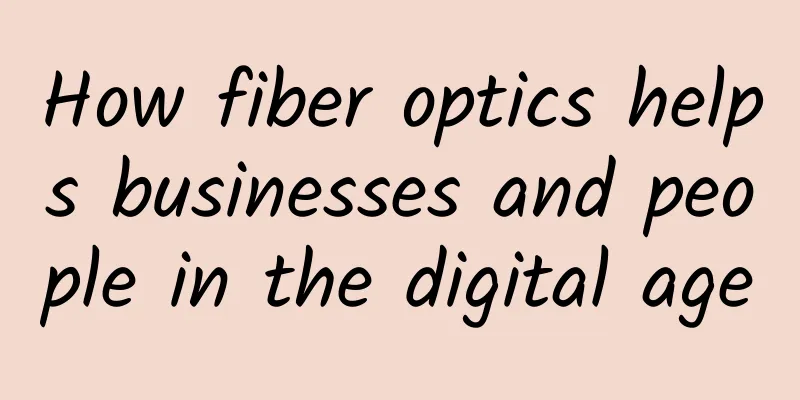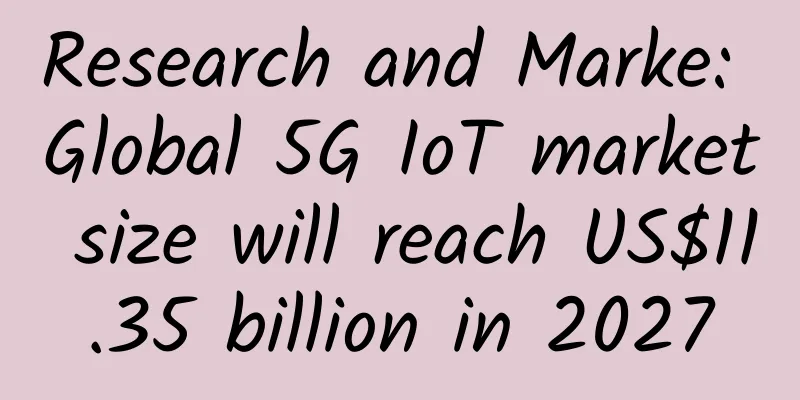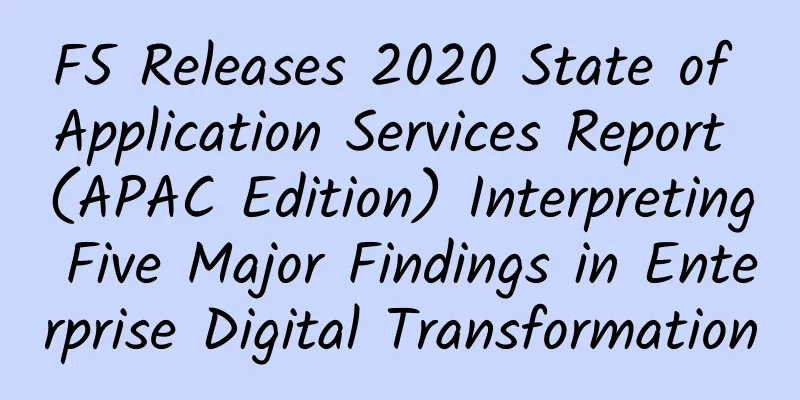How fiber optics helps businesses and people in the digital age

How fiber optics helps businesses and people in the digital ageWe consume more and more data every year. To ensure the reliability of the connection, telecoms have built fiber optic networks. Fiber optic sensors are increasingly being used in all areas of our lives. Experts agree that fiber optic technology will become increasingly important in the coming years. The world is changing rapidly, with new economic trends and global challenges emerging all the time. Fiber optic technology is a very promising field, and here are five reasons why entrepreneurs should pay close attention to it. Digital transformationDigital transformation and Industry 4.0 transformation aim to improve the current situation of enterprises by re-evaluating their original business models. Digitalization allows to change enterprise processes and re-evaluate their strategies. But it should not be confused with automation, because automation only optimizes the work of employees and reduces the impact of human factors. On the other hand, digital transformation helps to evaluate the efficiency of work processes and find new forms of interaction with customers. In fact, the sooner a company realizes the need for digital transformation, the more likely it is to remain competitive. Of course, the issue of digital transformation does not apply to all businesses, but it does apply to many. For example, the retail industry clearly benefits from "digitalization." The implementation of video analytics can track queues and quickly open additional cash registers, as well as analyze peak hours for store visits. Earlier, IDC estimated that by 2022, businesses may spend $1.8 trillion on digital transformation, and by 2026, this figure may reach $3.4 trillion. Of course, digital transformation means an increase in the speed and quality of information transmission, and fiber optic networks can help achieve this. When people hear "optical", they immediately think of telecommunications, but there are other ways to utilize it. For example, fiber optic sensors (FOS), sensors that use optical fibers as data transmission lines, can be successfully used to monitor various processes. In the industrial field, FOS can be used for process control and the implementation of the fourth industrial revolution; while in the oil and gas field, it can be used for equipment monitoring during extraction and transportation, optimizing tank management, etc. Internet of Things (IoT)The Internet of Things is a computer network system that collects and exchanges data, enabling remote control of processes without human intervention. People are increasingly integrating the Internet of Things into their daily lives. In search of comfort, people are actively using advanced technological devices in the concept of smart homes. The Internet of Things consists of interconnected devices that communicate with a central control center via the Internet of Things protocol and then connect to the user terminal through the provider's server. The user terminal can be a touch console on the wall of the residence or a homeowner's smartphone. According to Precedence Research, the global smart home technology market reached $80.45 billion in 2022 and is expected to grow to $581.85 billion by 2032. However, IoT is not limited to automatic coffee machines or light bulbs. Businesses also use it for more comprehensive purposes, such as automating daily processes and improving labor productivity. According to Meticulous Research, the industrial IoT market is growing at a rate of nearly 17% per year and is expected to reach $263.4 billion by 2027. Global giants like Ford, Mercedes-Benz, and John Deere have adopted this technology. Smart technologies require extensive broadband networks. Without them, the industry cannot thrive. Machine-to-machine communication and device-to-user interaction require large amounts of data to be transferred to data center servers. Essentially, further proliferation of the smart home concept requires fiber optic networks in every home. Big DataThe Internet of Things and Big Data (massive data sets) are closely related. They are an integral part of Industry 4.0, which involves the integration of business and society with digital technologies. There are many use cases for Big Data, and two examples will be provided here, one in the mechanical field and one in the human field. In the industrial field, Big Data can enable production automation, predict critical situations, and analyze the demand for specific products. In the healthcare field, Big Data can enable disease prediction, electronic medical record keeping, early detection of critical situations for each patient, and selection of the best treatment strategy for an individual. Obviously, the data accumulated by companies is very valuable to them, as it contains information about customers and key processes. Proper use of this information can provide a significant advantage over competitors. However, achieving this requires advanced IT infrastructure. Instant access to big data requires data centers with powerful servers, as well as high-speed data transmission, which can only be guaranteed through optical fiber. Data processing in data centers also means an increase in the use of optical fiber networks. Smart CityAnother fast-growing trend is the emergence of "smart cities." There are now more than 200 smart cities around the world, with Barcelona, Singapore, London, Dubai, Seoul, New York, Zurich and Amsterdam being the most advanced. These urban centers use big data to improve safety and energy efficiency. Smart cities are characterized by improved urban infrastructure. For example, smart city systems help to enhance fire safety. Sensors alert emergency services and city systems automatically adjust traffic while notifying citizens. Smart city systems track location, allowing residents to use their smartphones in real time to determine the arrival of a bus or identify streets affected by traffic congestion. To successfully implement a "smart" approach to urban planning, technologically advanced data centers and effective data analytics solutions are necessary. Seamless connectivity and high-speed internet access are also necessary for sensors and devices to collect and communicate information. Fiber optic networks can also play an important role as they offer low signal attenuation, are immune to electromagnetic interference, and function effectively in varying temperatures and humidity levels. Environmental, Social and Governance (ESG) TransformationMany companies around the world are undergoing an environmental, social and governance (ESG) transformation. These companies use renewable energy, implement waste recycling practices, work with public associations, and choose partners and customers who are interested in sustainable development. The level of investment in such projects varies depending on the size of the organization and industry, but companies are increasingly incorporating such spending into their investment plans. According to the European Commission, telecommunications currently account for 8-10% of global energy consumption and 2-4% of greenhouse gas emissions. Fiber optics can help reduce these figures, as this technology offers many advantages compared to copper cables. First, fiber optics allow for a reduction in copper production. A 200-foot-long copper cable requires 2 kg of copper, and the mining process releases about 1 kg of harmful substances into the atmosphere. Second, optical signals can be transmitted over long distances through optical fibers with minimal power loss, which reduces the number of signal amplifiers and reduces energy consumption. Third, fiber optic cables are more durable than copper cables. Their resistance to corrosion, temperature fluctuations, and electromagnetic interference means that networks built using optical fibers do not require frequent repairs. However, sustainable development is not only about ecology, but also about achieving a balanced flow of processes in the economic and social life of people. Fiber optics is a business contribution to solving social problems. This technology has the ability to bridge the digital divide, providing people who were previously deprived of digitalization with the opportunity to fully participate in the global economy and improve their quality of life. For some, it provides the ability to consult healthcare professionals in a timely manner; for others, it provides access to education and employment opportunities, putting the acquired knowledge into practice. What’s next?Digital technology is a vivid example of how communications improve the quality of people’s lives. According to Statista, in 2017, the number of fiber-optic Internet users worldwide exceeded 1 billion, and by 2022, the number of fiber-optic Internet users will increase to 1.4 billion out of the world’s 5.3 billion Internet users. Clearly, in the long run, there is a great demand for fiber-optic technology in telecommunications, and the implementation of FOS and other advanced optical solutions will contribute to the continued development of this field. For businesses, fiber optics provides faster, more efficient communications, enables the adoption of cutting-edge technologies, and enhances data security. It is a critical infrastructure component for global businesses, enabling them to remain competitive, innovate, and thrive in the modern digital age. Entrepreneurs who want to stay operational and grow their businesses amid major trends in the global economy and technology should pay close attention to the fiber optic business, explore investment prospects, build reliable partnerships, and evaluate the potential to integrate these technologies into their operations. |
<<: By 2027, global 5G IoT roaming connections will reach 142 million
>>: Overview of 5G Industry Terminal Development
Recommend
Innovations in the future communications infrastructure for wireless networks
As technology advances, the need for faster and m...
CloudServer: Los Angeles/New York 4GB memory package starts at $12 per quarter, 1GB memory VPS starts at $10 per year
At the beginning of the year, the blog shared inf...
Maxthon Hosting: Los Angeles 9929 Line 38 yuan/month-1GB/20G SSD/600GB@200Mbps/Free backup
Aoyo Host (aoyozhuji, aoyoyun) was founded by shy...
Let’s talk about 6G development
As of now, the fifth generation (5G) mobile commu...
ACL (Access Control List) Principle and Application
1. ACL Introduction Communication between informa...
Kuroit: Los Angeles/Phoenix data center from £2/month, single core, 2GB memory, 20G disk, 10Gbps bandwidth
Kuroit is a foreign hosting company founded in 20...
Kvmla Japan Tokyo Softbank VPS promotion 20% off, top up 500 yuan and get 100 yuan
Kvmla, a long-established Chinese VPS hosting com...
Juniper Networks 2017 Annual Conference grandly held, focusing on telecom and OTT markets
[51CTO.com original article] In February 2017, th...
Very comprehensive! A comparison of the financial and operating data of the three major operators in the first quarter
Recently, the three major operators have announce...
As the demand for connectivity surges, 5G becomes the key to sustainable development of the ICT industry
[[343025]] As the global energy crisis intensifie...
Wi-Fi Sense: Your home's next sensor may not be a sensor
Part 01 How Wi-Fi Sensing Works Wi-Fi sensing is ...
There are four major challenges in the development of 5G. The next 2-3 years will be a critical period for the development of 5G.
A total of more than 700,000 5G base stations hav...
Differences between Single Mode Fiber and Multimode Fiber
What is Fiber Optic? Fiber optics is a type of ne...
The key to number portability is to break the "routines" and use fewer "empty tricks"
[[251458]] The Ministry of Industry and Informati...
Gartner: Global 5G network infrastructure spending will nearly double in 2020
Recently, according to the forecast of Gartner, a...









